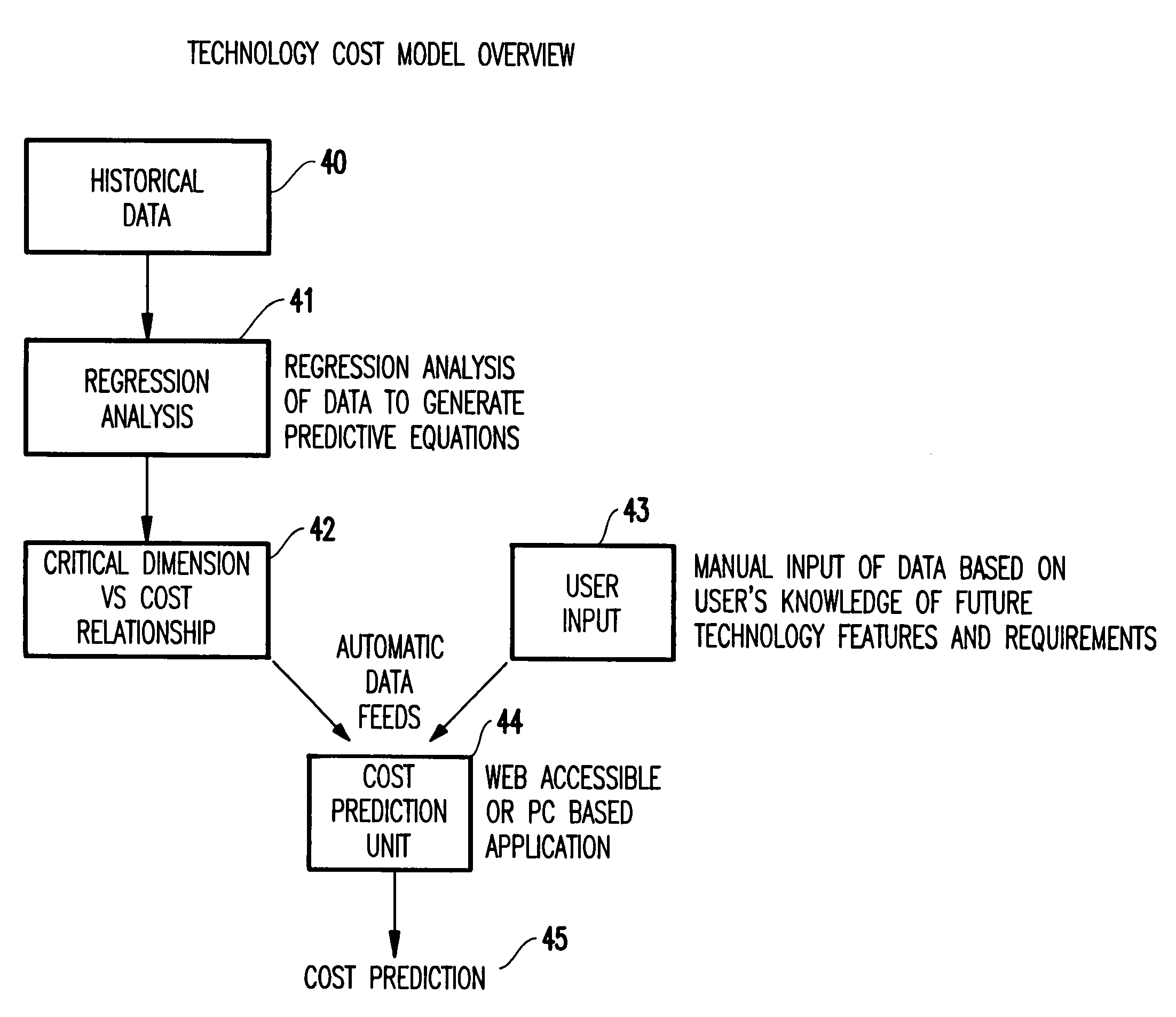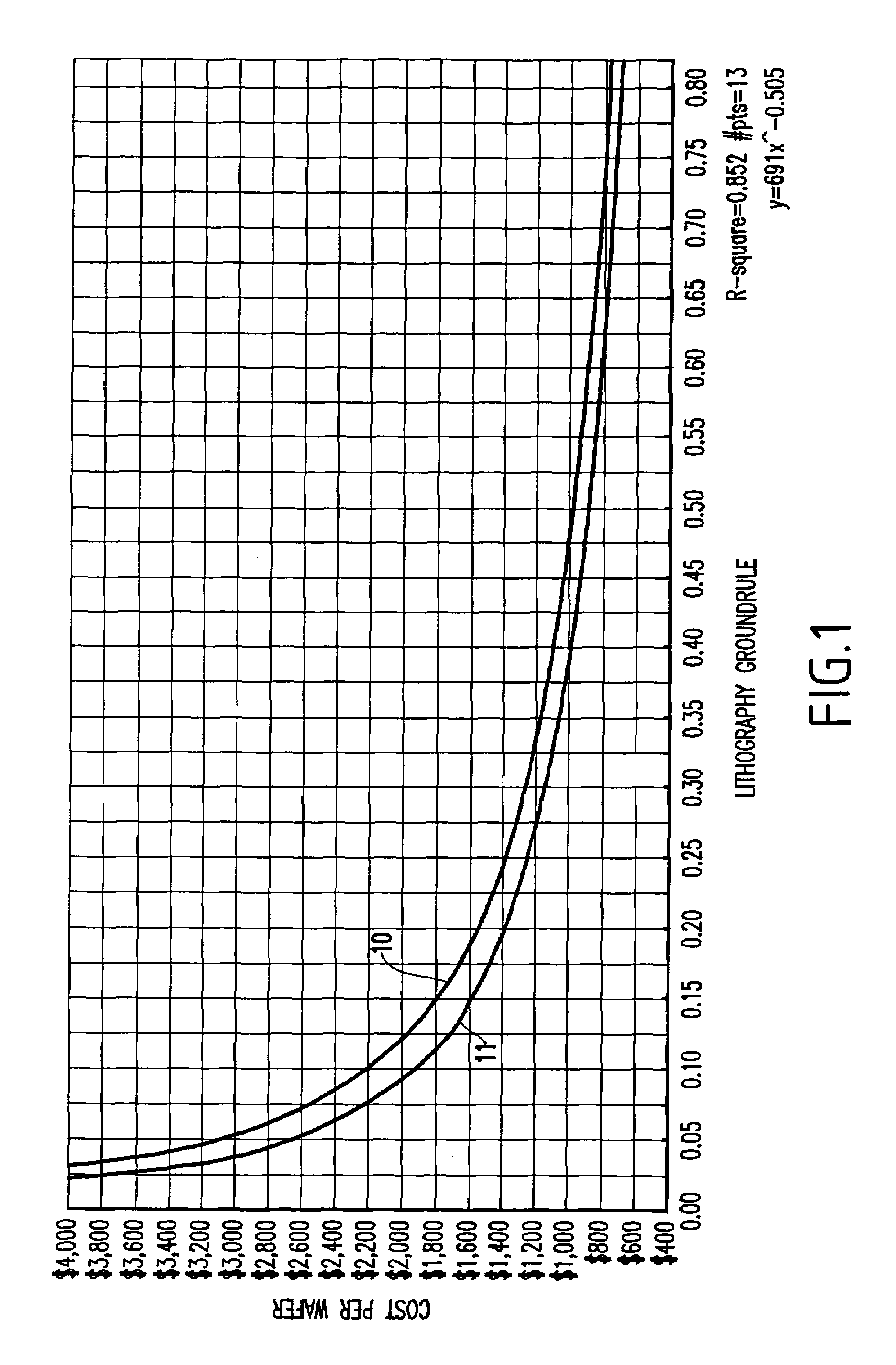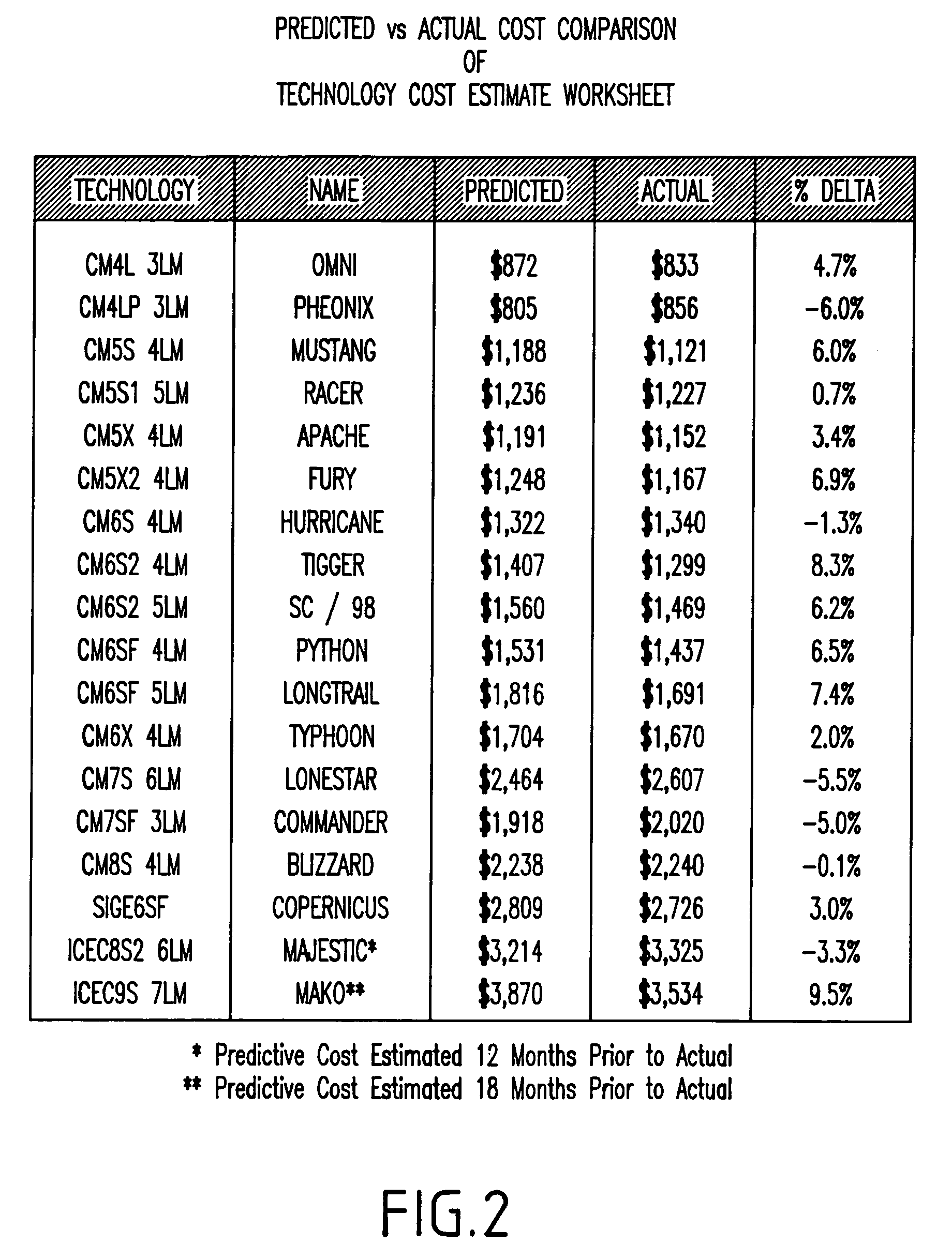System and methodology for calculating the cost of future semiconductor products using regression analysis of historical cost data
a technology of historical cost data and system and methodology, applied in the field of cost prediction systems, can solve the problems of difficult to accurately predict the cost of a wafer that will be running in the fabricator 1 to 5 years in the future, historical cost models have traditionally been less useful for costing future products, and the limitations of products to achieve the effect of reducing historical critical dimensions and historical critical groundrules
- Summary
- Abstract
- Description
- Claims
- Application Information
AI Technical Summary
Benefits of technology
Problems solved by technology
Method used
Image
Examples
Embodiment Construction
[0017]The invention solves the foregoing problem by extrapolating current costs of different technologies to future technologies. In other words, the invention looks at many different technology generations (e.g. 4th-9th generation of silicon-based technologies) and predicts the cost of future unknown generations (e.g., 10th or 11th generation of silicon-based technology). As mentioned above, in silicon-based technology, the generations are defined by relatively large reductions in the dimensions of the gate conductor in a transistor structure. Therefore, the invention looks at historical costs for technologies producing different gate dimensions to predict the cost of future technologies that produce even smaller gate dimensions. No previous methodology or system calculates cost across different technology generations. Instead, conventional cost prediction systems only predict cost within one technology generation (e.g., variations of a technology for a given gate dimension).
[0018]...
PUM
 Login to View More
Login to View More Abstract
Description
Claims
Application Information
 Login to View More
Login to View More - R&D
- Intellectual Property
- Life Sciences
- Materials
- Tech Scout
- Unparalleled Data Quality
- Higher Quality Content
- 60% Fewer Hallucinations
Browse by: Latest US Patents, China's latest patents, Technical Efficacy Thesaurus, Application Domain, Technology Topic, Popular Technical Reports.
© 2025 PatSnap. All rights reserved.Legal|Privacy policy|Modern Slavery Act Transparency Statement|Sitemap|About US| Contact US: help@patsnap.com



